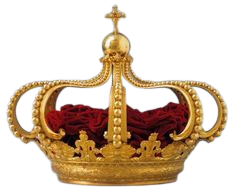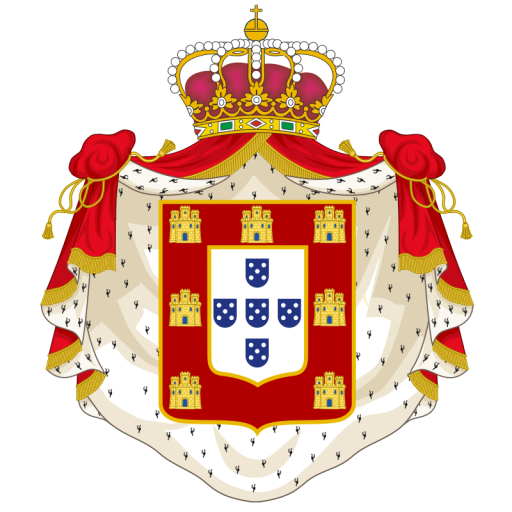
The House of Bragança, was founded by Dom Afonso, 1st Duke of Bragança, illegitimate son of King Dom João I, first king of the Royal House of Avis, heir of Royal House of Borgonha (Burgundy). He married Dona Brites Pereira, daughter of Blessed Constable D. Nuno Álvares Pereira, Count of Ourém. From his father-in-law he received the titles of Count of Ourém and Count of Barcelos. From his half-brother, acting as a ruler of the kingdom he received the title Duke of Bragança, marking the foundation of House of Bragança.
It was from Dom Jaime, 4th Duke of Bragança, that this great House came to have rights in the succession of the Throne, since his mother is Dona Isabel, sister of King Dom Manuel I, and in turn daughter of the Prince Dom Fernando, Duke of Viseu, and so granddaughter of King Dom Duarte.
After the disaster of Alcácer Quibir (1578), and the consequent death of King Dom Sebastião, and following that of Cardinal-King Dom Henrique, Portugal fell under the rule of the King of Spain Dom Filipe II, because he claimed his rights, due to be a son. of Princess Dona Isabel of Portugal, daughter of King Dom Manuel I.
At this time the Portuguese lawmen hadn’t clear ideas about sucession law. The House of Parma, althought having a better law than this one, it was repugnant to national sentiment, which accepted only a Portuguese king. Immediately afterwards, in the sucession line, came the House of Braganza, through Duchess Dona Catarina, who was in fact the only opponent of King Philip II, and from which the rights of the House of Braganza to the throne of Portugal came closer.
After the Restoration of Independence of Portugal (December 1, 1640), and being acclaimed the Duke of Bragança as King of Portugal, it was intended to legitimize by the Cortes (assembly of representatives) of 1641, the so-called “Laws of the Corts of Lamego”, in what it concerned the Laws of the Succession of the Crown, which henceforth were adopted by the new Dynasty. From then they were considered Fundamental Kingdom Laws.
Later, in 1826, the Constitutional Charter retained the same tradition, providing that the succession of the Crown should proceed by legitimacy, according to the principles of birthright and representation, forcing Princess “Heiress” to marry a Portuguese, with prior royal permission, and excluding from the throne the foreigners. The so-called “Laws of the Corts of Lamego”, in effect since 1641 and considered the Fundamental Laws of the Kingdom, added the obligation of the Princesses to marry a noble (besides Portuguese).
Between 1827 and 1834, the two Constitutional Branches of the Royal House of Portugal were formed, respectively the line of the descendents of Queen D. Maria II (Kings of Portugal – Bragança of Saxe-Coburg-Gotha) and the line of the descendents of Princess Dona Ana de Jesus Maria (Dukes of Loulé – Mendóça Rolim de Moura Barreto – Folque of Mendóça – Folque de Bragança and Bourbon de Mendóça).
